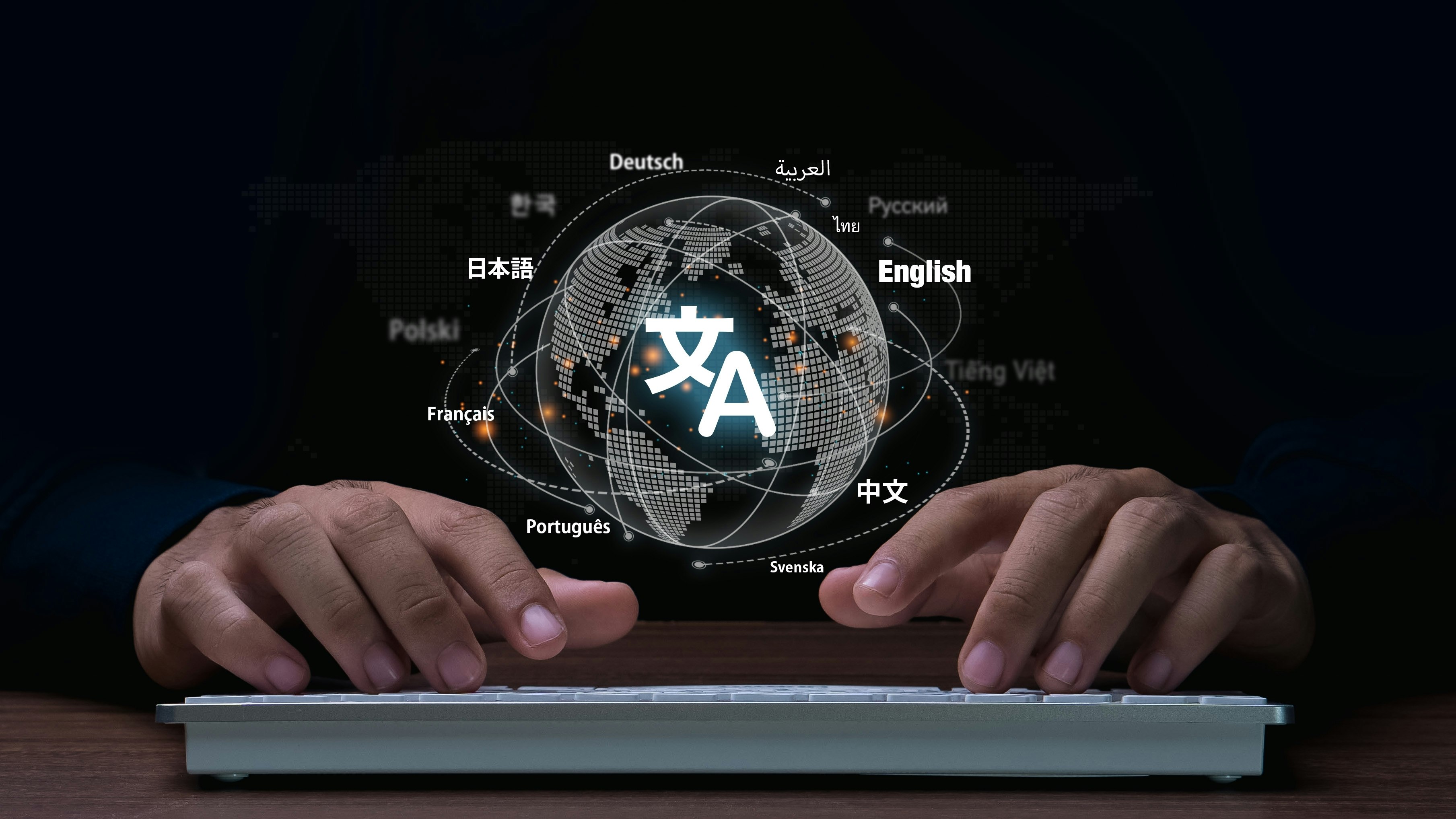
Are you under pressure to reduce translation costs and reach your multilingual markets faster? Maybe you’ve been asked to use AI and MT (machine translation) to translate large content volumes—but you’re concerned about compromising on quality. Or perhaps you’re unsure of the differences between MT, AI, and LLMs (large language models), and how these tools could support your global content strategy.
If you’re wondering where to start with MT—or you just want to use it more effectively—Rubric can help. We identify the most appropriate automation tools for your content and help you integrate them into your pipeline, so you can achieve the quality you need while controlling costs and turnaround times.
Machine translation explained
Machine translation (MT) automates the translation process, enabling you to translate large volumes of content much faster than a human could.
The technology has come a long way from traditional rule-based systems, or statistical models comparing bilingual databases. Today, most MT engines use neural MT (NMT)—a form of artificial intelligence that enables them to “learn” from previous translations and keep improving quality. Using artificial neural networks—like those in our own brains—NMT systems first “understand” the source-language text, based on patterns they’ve encountered before, and then create a target-language version.
While the results are generally accurate and fluent, it’s worth remembering that machine learning is not the same as human understanding. That is why we need to identify the appropriate level of checks for your content to adequately manage risk when we use NMT. This will vary from content type to content type.
And what about large language models (LLMs)?
The latest buzzword in language automation, LLMs are AI-powered systems trained on vast amounts of data to perform various language tasks—from generating ideas and content, to adapting style and summarizing.
And yes, LLMs are also capable of translation, prompting many businesses to embrace tools like ChatGPT as a fast and affordable route to multilingual content. But, while there is exciting potential here, we’ve found LLM translation is less robust than established MT models. It also doesn’t cover all language combinations.
For now, rather than relying on LLMs as a core translation tool, we prefer to use them for additional tasks, such as adapting translations to incorporate specific terminology.
Making MT work for your business
At Rubric, we’re big believers in automating processes to save our clients time and money. By using AI to support localization, we’ve helped clients reduce both their translation costs and time to market by 70%, while maintaining quality.
But we also know how automation can quickly start to feel unmanageable, with problems and complexities multiplying as you add more languages and content.
To get the most from MT, you need a solid implementation plan and a good LangOps team and strategy. LangOps, short for Language Operations, covers the end-to-end technical process of multilingual content management. It takes a centralized and strategic approach to localization, breaking down internal silos to eliminate bottlenecks, streamline content workflows, and deliver consistent translations at scale.
Rubric can help set your business up for success. As Rubric IT Director Dominic Spurling explains:
“MT can create big savings, but translation is just one step in the localization process. We help our clients optimize their whole content pipeline, so MT can do what it does best: saving them time and money while delivering reliable translations.”
Dominic Spurling
IT Director
An integrated approach
We start by reviewing your source content to identify which elements are suitable for machine translation, and which aren’t. We’ll ask you about the purpose of each piece, where it’s used, and the intended audience, to help you determine what level of quality you really need.
To achieve the best results for you, we customize our MT tools to align with your brand and terminology, incorporating effective checks and balances to ensure translations meet your required standards. That always includes a human touch to check the tools are performing as expected and nothing has slipped through the net, as well as to help us learn and improve.
We can also help you scale up your localization efforts by analyzing your source content, standardizing it wherever possible, and optimizing it for MT. This helps you get consistent content to market faster and more smoothly. If you’re considering investing in a TMS (translation management system) to boost scale, we can help you make the right choice.
And with our global expertise, we can advise on the right approach for your target markets and help you set expectations with stakeholders. MT may not be the most effective solution for all languages, particularly those where less content is available to train the models. Trust us to provide impartial advice and guidance that supports your content strategy.
If you need to reach your international markets more quickly and cost-effectively, contact Rubric. We support you to integrate automation so it adds value, drives improvement, and delivers quality translations on time, every time.